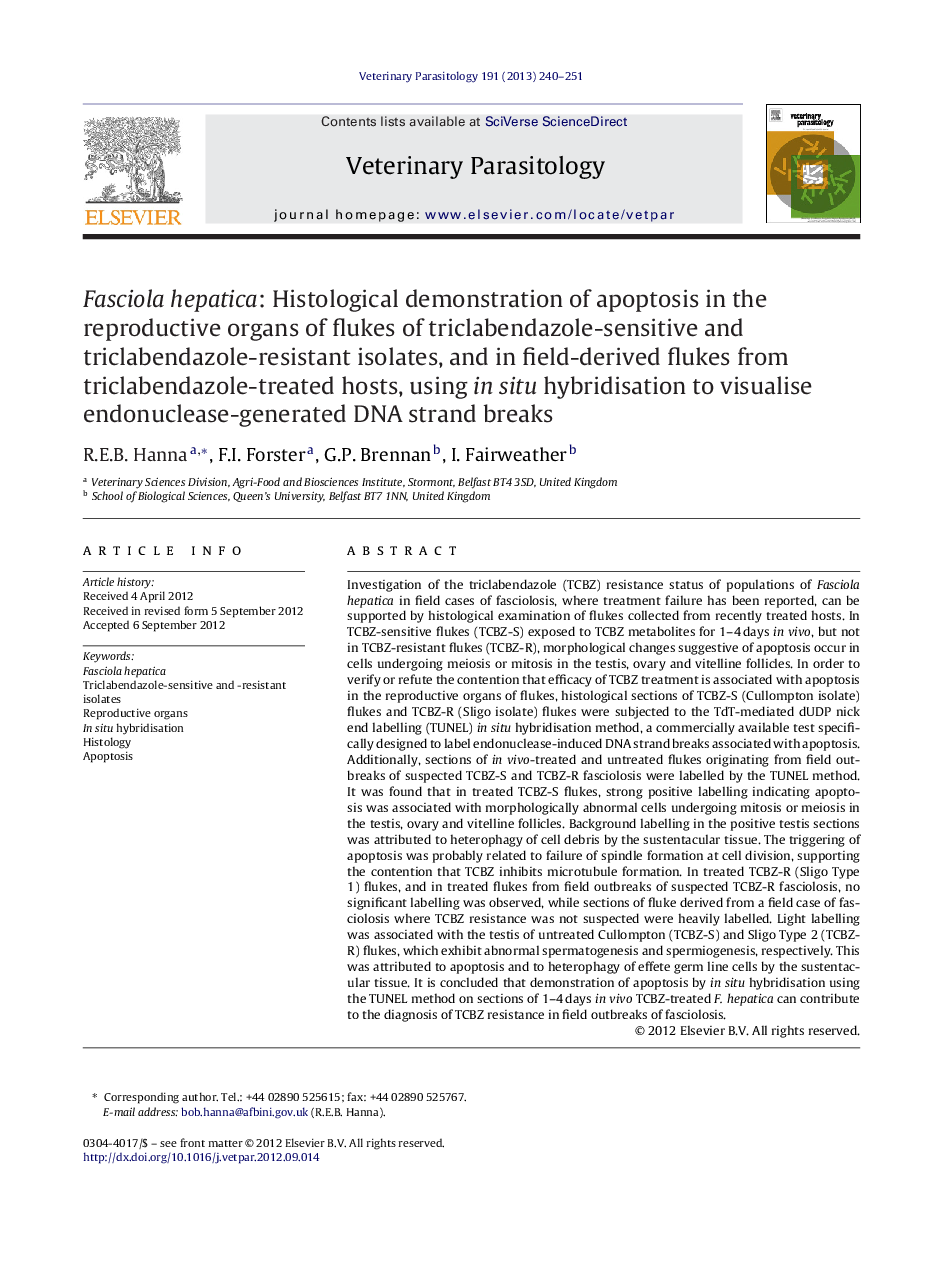| کد مقاله | کد نشریه | سال انتشار | مقاله انگلیسی | نسخه تمام متن |
|---|---|---|---|---|
| 5804517 | 1555705 | 2013 | 12 صفحه PDF | دانلود رایگان |

Investigation of the triclabendazole (TCBZ) resistance status of populations of Fasciola hepatica in field cases of fasciolosis, where treatment failure has been reported, can be supported by histological examination of flukes collected from recently treated hosts. In TCBZ-sensitive flukes (TCBZ-S) exposed to TCBZ metabolites for 1-4Â days in vivo, but not in TCBZ-resistant flukes (TCBZ-R), morphological changes suggestive of apoptosis occur in cells undergoing meiosis or mitosis in the testis, ovary and vitelline follicles. In order to verify or refute the contention that efficacy of TCBZ treatment is associated with apoptosis in the reproductive organs of flukes, histological sections of TCBZ-S (Cullompton isolate) flukes and TCBZ-R (Sligo isolate) flukes were subjected to the TdT-mediated dUDP nick end labelling (TUNEL) in situ hybridisation method, a commercially available test specifically designed to label endonuclease-induced DNA strand breaks associated with apoptosis. Additionally, sections of in vivo-treated and untreated flukes originating from field outbreaks of suspected TCBZ-S and TCBZ-R fasciolosis were labelled by the TUNEL method. It was found that in treated TCBZ-S flukes, strong positive labelling indicating apoptosis was associated with morphologically abnormal cells undergoing mitosis or meiosis in the testis, ovary and vitelline follicles. Background labelling in the positive testis sections was attributed to heterophagy of cell debris by the sustentacular tissue. The triggering of apoptosis was probably related to failure of spindle formation at cell division, supporting the contention that TCBZ inhibits microtubule formation. In treated TCBZ-R (Sligo Type 1) flukes, and in treated flukes from field outbreaks of suspected TCBZ-R fasciolosis, no significant labelling was observed, while sections of fluke derived from a field case of fasciolosis where TCBZ resistance was not suspected were heavily labelled. Light labelling was associated with the testis of untreated Cullompton (TCBZ-S) and Sligo Type 2 (TCBZ-R) flukes, which exhibit abnormal spermatogenesis and spermiogenesis, respectively. This was attributed to apoptosis and to heterophagy of effete germ line cells by the sustentacular tissue. It is concluded that demonstration of apoptosis by in situ hybridisation using the TUNEL method on sections of 1-4Â days in vivo TCBZ-treated F. hepatica can contribute to the diagnosis of TCBZ resistance in field outbreaks of fasciolosis.
Journal: Veterinary Parasitology - Volume 191, Issues 3â4, 31 January 2013, Pages 240-251